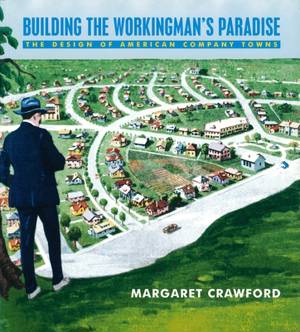
- Afhalen na 1 uur in een winkel met voorraad
- Gratis thuislevering in België vanaf € 30
- Ruim aanbod met 7 miljoen producten
- Afhalen na 1 uur in een winkel met voorraad
- Gratis thuislevering in België vanaf € 30
- Ruim aanbod met 7 miljoen producten
Zoeken
€ 35,45
+ 70 punten
Omschrijving
This innovative and absorbing book surveys a little known chapter in the story of American urbanism--the history of communities built and owned by single companies seeking to bring their workers' homes and place of employment together on a single site. By 1930 more than two million people lived in such towns, dotted across an industrial frontier which stretched from Lowell, Massachusetts, through Torrance, California to Norris, Tennessee. Margaret Crawford focuses on the transformation of company town construction from the vernacular settlements of the late eighteenth century to the professional designs of architects and planners one hundred and fifty years later. Eschewing a static architectural approach which reads politics, history, and economics through the appearance of buildings, Crawford portrays the successive forms of company towns as the product of a dynamic process, shaped by industrial transformation, class struggle, and reformers' efforts to control and direct these forces.
Specificaties
Betrokkenen
- Auteur(s):
- Uitgeverij:
Inhoud
- Aantal bladzijden:
- 256
- Taal:
- Engels
- Reeks:
Eigenschappen
- Productcode (EAN):
- 9780860916956
- Verschijningsdatum:
- 17/02/1996
- Uitvoering:
- Paperback
- Formaat:
- Trade paperback (VS)
- Afmetingen:
- 199 mm x 225 mm
- Gewicht:
- 675 g

Alleen bij Standaard Boekhandel
+ 70 punten op je klantenkaart van Standaard Boekhandel
Beoordelingen
We publiceren alleen reviews die voldoen aan de voorwaarden voor reviews. Bekijk onze voorwaarden voor reviews.








